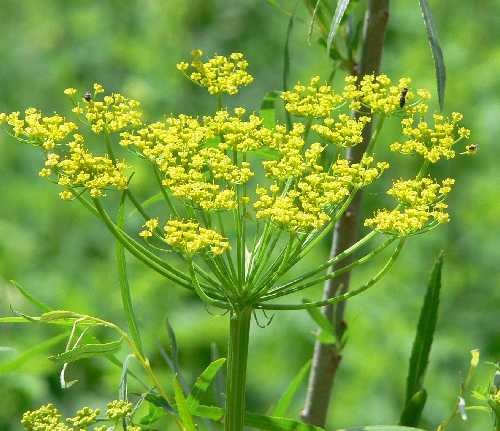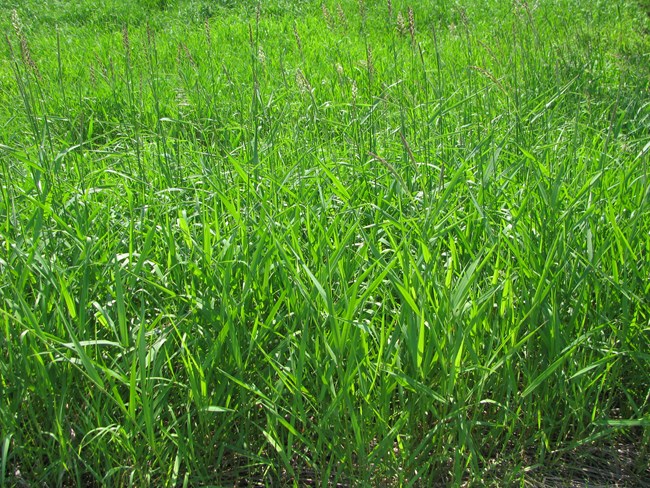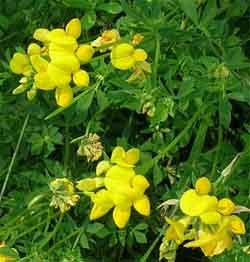What are exotic species?Voyageurs National Park is home to a large diversity of plants and animals. Unfortunately, not all of these are found naturally in the park. Exotics, or non-natives, are any plant or animal species that are not found in an area naturally and were introduced either intentionally or by accident. While not all exotic species are harmful to the natural ecosystem, many can cause problems to native plants and animals and must be removed. Exotic species are becoming an increasing problem at Voyageurs National Park. How do exotic plants and animals become successful invaders to an area?Exotic plants and animals are difficult to control if they become invasive. The term invasive refers to species that spread rapidly through an area and take over the native species living there. The following factors make invasive species successful in an area:
How do exotics arrive to a new area?Exotics are actually native to other areas and must be introduced into a new area. This can happen intentionally or by accident. Some examples of exotics being introduced intentionally are: planting non-native ornamental flowers in gardens or around cabins; releasing fish and wildlife for sporting purposes; and releasing unused fish bait into lakes and streams. However, most exotics are transported by accident. This occurs when small, aquatic creatures are released from a ship’s ballast water; plant seeds are mixed in with crop mixtures; or plants are not cleaned from vehicles and boats before transport. Which methods are used to remove exotic species?The most effective method for removing exotics from an area depends on the individual species. Plants and animals do not respond the same way to all treatments. As we learn more about exotic species, new technologies are being developed to quickly eliminate them. The most common removal methods fall into one of three categories:
Why should you care about exotic species?Many visitors come to Voyageurs National Park for the beautiful scenery and natural landscape. As more exotic species move into the area, they out-compete the native plants and animals living there. Imagine looking across a wetland filled with abundant aquatic plants and animals swimming about. This is a visitor’s ideal view of the park. Now think about that wetland as one giant stand of exotic cattails and no visible wildlife. Exotics are having this effect and must be managed to restore the park’s natural beauty. Visitors can help prevent the spread of exotic species by becoming familiar with those found within the park. Click on the links located below to learn more about exotics in Voyageurs National Park. Inform a park naturalist if you notice these during your visit. 
Christopher Noll, University of Wisconsin Wild ParsnipWild Parsnip (Pastinaca sativa) is a tall (six inches – four feet) perennial herbaceous plant. It spends the first year as a small rosette (six inches tall) and can grow up to four feet in its flowering stage. Wild parsnip has broad, flat-topped yellow flowers which bloom throughout the summer months. This plant is native to Europe and Asia. Because the roots are edible, it was brought to the United States and planted as a food source. It escaped cultivation and is now a widespread invasive plant across the United States. Exotic and invasive plants, like wild parsnip, can out-compete native plants. This can cause a native plant community to shift to a field of exotic species and possibly remove important food sources for animals. Warning: Visitors should be aware of wild parsnip and how to identify the plant. This plant, when cut or disturbed, produces a toxic juice. If the juice contacts the skin and reacts with sunlight, it can cause severe rashes and burns. This condition is known as phytophotodermatitis. Voyageurs National Park recognizes the negative effects wild parsnip has on the ecosystem. Staff members are taking steps to eliminate this plant from the park. Careful use of herbicides has been effective in treating patches of wild parsnip within the park. Cutting flower heads before going to seed can also prevent the plant from spreading. 
NPS Reed Canary GrassReed Canary Grass (Phalaris arundinacea) is a tall (up to six feet), cool season grass. It has wide leaves (up to 1/3”) which can grow to 10” long. Flowers are greenish purple and bloom in spring through early summer. Seed heads are light brown and mature in mid-late July. This plant has a strain native to North America. However, it has been crossed with a European strain to create a highly invasive plant. This “hybrid” has been planted as “marsh hay” in wet areas to provide food for livestock.Because of its invasive, nature, reed canary grass is often planted along roadsides and at construction sites to prevent erosion. Reed canary grass is a very successful invader in Voyageurs National Park. Its height allows it to shade out any plants nearby. It also produces a series of underground stems, choking out the roots of other plants. If this grass is cut early in the season, a second crop may grow back later in the summer. Voyageurs National Park recognizes the negative effects reed canary grass has on the ecosystem. Staff members are taking steps to eliminate this plant from the park. A reed canary removal study has been tried near the Rainy Lake Visitor Center. Removal methods used in the study include: laying landscape fabric to cover and choke out the plants, herbicide application, and native plant restoration. The most practical methods found to control reed canary grass in Voyageurs National Park are spraying with a mild herbicide followed by reseeding with native grass species. For additional information on reed canary grass, click on the link below to visit the Minnesota Department of Natural Resources website: MNDNR – Reed Canary Grass 
Merel R. Black, University of Wisconsin Birdsfoot TrefoilBirdsfoot Trefoil (Lotus corniculatus) is a low-lying (twelve inches) perennial herbaceous plant. Individual plants spread horizontally, forming large, dense mats across the ground. Yellow flowers form in groups of 3-12 and bloom continuously through most of the summer.Mature seed pods are one inch long; clusters of pods together remind people of a “bird’s foot”. This plant is native to Eurasia and North Africa and was introduced to the United States for its benefits. Farmers find birdsfoot trefoil excellent forage for cattle because it produces a large biomass. Trefoil, planted with some grasses, can yield up to four tons of hay per acre. Another benefit is erosion prevention along roadsides and construction sites. Birdsfoot trefoil has become a successful invasive species.This is due to an individual plant’s ability to spread horizontally and produce large amounts of seeds.The plant can effectively eliminate other native species trying to grow nearby. Voyageurs National Park recognizes the negative effects birdsfoot trefoil has on the ecosystem.Resource managers are taking steps to eliminate this plant from the park.The most effective removal method is to spray a species-specific herbicide.Transline will target species in the pea family without affecting other plants.Replanting the following year with other ground cover plants helps prevent trefoil from returning. For additional information on birdsfoot trefoil, click on the link below to visit the Minnesota Department of Natural Resources website: MNDNR – Birdsfoot Trefoil 
Paul Drobot, University of Wisconsin Canada ThistleCanada thistle (Cirsium arvense) is a tall (two-four feet) perennial herbaceous plant. Leaves are large with sharp, spiny edges. Flowers are bright or deep purple, bristly clusters and bloom continuously through the summer. Mature flower heads produce thousands of small, feathery seeds and are easily dispersed by wind. This plant is native to Eurasia and North Africa. In the 1600s it was introduced in the United States, most likely by accident, in a seed or crop mixture. Canada thistle easily establishes itself in disturbed areas with exposed soil. These areas include old building sites, gravel pits, and roadsides. Beaver ponds are also excellent breeding grounds for this species. Many biological factors make Canada thistle a successful invader. Sharp, spiny leaves discourage animals from eating.Deep, horizontal roots, up to 12’ long, can easily out-compete native plants for water. One plant can produce thousands of seeds annually, which are easily spread by birds and wind. Seeds can also remain dormant in the soil for 20 years. Voyageurs National Park recognizes the negative effects canada thistle has on the ecosystem.Resource managers are taking steps to eliminate this plant from the park.The most effective removal method is herbicide application. For additional information on canada thistle, click on the link below to visit the Minnesota Department of Natural Resources website: MN DNR – Canada Thistle 
NPS Photo Bull ThistleBull Thistle (Cirsium vulgare)is a tall (three-six feet) biennial herbaceous plant. Large, alternate leaves have sharp spines at the tip. The tall, thick stems are also sharp and covered in prickles. Round, robust flower heads are pinkish purple and bloom mid-late summer. Mature seed heads produce thousands of small, feathery seeds and are easily dispersed by wind. This plant is native to Eurasia. In the 1800s it was introduced in the United States colonial areas, most likely by accident, in a seed or crop mixture. Bull thistle easily establishes itself in disturbed areas with exposed soil. These areas include old building sites, gravel pits, and roadsides. Beaver ponds are also excellent breeding grounds for this species. Unlike canada thistle, which tends to grow in dense clumps, bull thistles grow as solitary plants. Many biological factors make Bull thistle a successful invader. Sharp, spiny leaves, stems, and flower heads discourage animals from eating. Deep, tap roots can easily out-compete native plants for water. One plant can produce thousands of seeds annually, which are easily spread by birds and wind. Seeds can also remain dormant in the soil for 10 years. Voyageurs National Park recognizes the negative effects bull thistle has on the ecosystem. Resource managers are taking steps to eliminate this plant from the park. The most effective removal method is herbicide application. If bull thistle is treated before it flowers in its second year, the species is easier to control, as it will not grow back a third year. For additional information on bull thistle, click on the link below to visit the Minnesota Department of Natural Resources website: MN DNR – Bull Thistle |
Last updated: April 26, 2018
